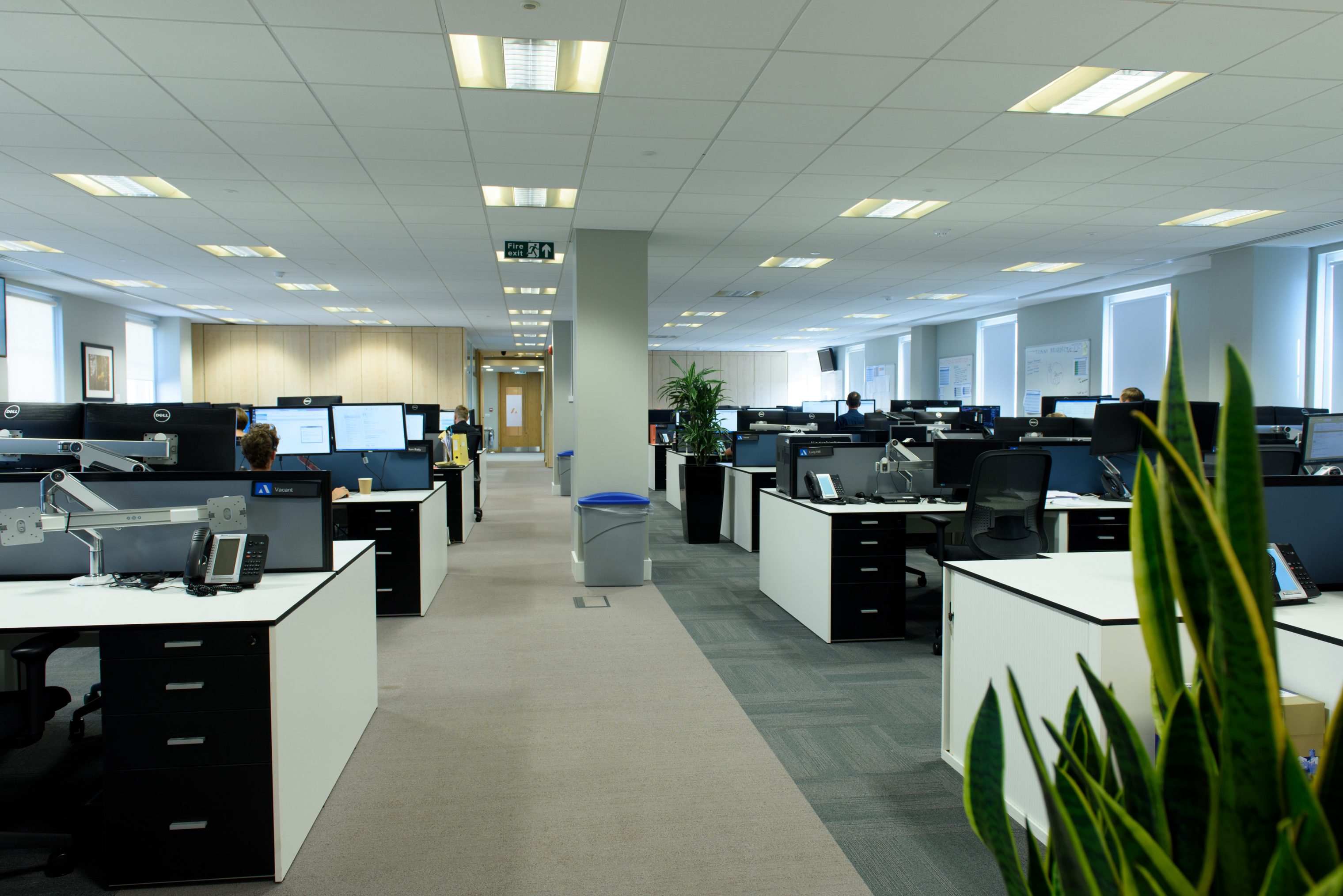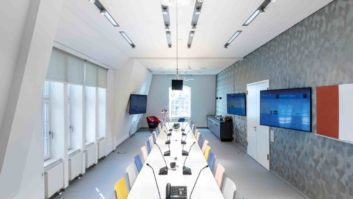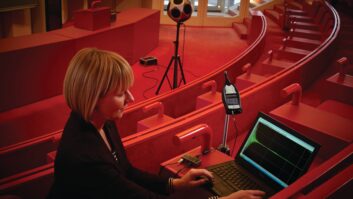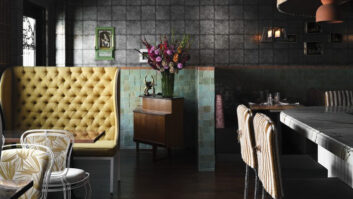
Our special report for March concerns how to improve a variety of acoustic environments. In the first feature Ian McMurray looks at the corporate world.
We take good-quality sound pretty much for granted wherever we go. We typically only notice sound when it’s bad – poor PA announcements, for example, or intrusive noise in a working environment.
Ensuring good-quality sound in the corporate environment has, however, not become easier over the years as row upon row of box-like offices and meeting rooms have given way to open spaces, informal huddle rooms and visually imaginative public areas.
“We often visit corporate environments where acoustic considerations are taken into account too late or at the end of a project,” notes Hanieh Motamedian, business development manager at audio systems distributor Sound Directions. “This appears to occur often in open-plan office environments, where several different departments within an organisation might be sharing the same spaces.
“As an example,” she goes on, “imagine a team of software engineers, developing and writing code, sharing work space with telesales or customer services teams working within the same company. Of course, any telephone conversations will become a distraction to the software engineers.
“Also,” Motamedian continues, “imagine a glass boardroom or meeting room amidst an open-plan office environment. It is likely that any conversations, potentially confidential or private, taking place within the boardroom or meeting room will spill out into the open-plan office for colleagues to hear. In these situations, confidentially and privacy are compromised; staff confidence is also compromised.
“Both examples represent situations which do occur if acoustic environments are not considered at an early stage,” she concludes.
Not enough consideration
She also believes that offices are sometimes designed as beautiful workspaces, without enough consideration given to the needs of users or people working within them – resulting in people working with headphones, isolating themselves from workplace noises and distractions around them to improve individual productivity. As she points out: this appears to negate the collaborative benefits of open-plan environments.
Marc Happes, who is product manager, unified communications at Bose Professional – and a former consultant and contractor – sees a similar phenomenon.
“Aesthetics often seem to take precedence over room function,” he says, “with hard surfaces and specialised wall treatments being added to the room designs. Glass walls, sheet rock or open ceilings, tiled floors and high-end tabletop materials are modern-day architectural practices that are prone to delivering sub-optimal acoustics.”
“Hard walls and furniture – surfaces where reflections are possible – won’t create the best acoustic environment,” agrees Tom Colman, senior applications engineer at Shure Europe. “The current corporate trend of open, collaborative spaces that are pleasing to the eye rarely deliver the best acoustics. However, minor changes like soft furnishings can have an immediate impact.”
Importance of consultants
“Corporate environments differ greatly – some rooms need to be acoustically dead and other rooms need to be brighter,” he adds. “No two rooms are the same, and each will be treated differently depending on what the actual space will be used for. Not paying attention to what the acoustics will be like at the design stage of the office build is something that we see time and time again. We naturally presume all rooms work well, without considering what goes on in the background to enhance the quality of the sound in any given acoustic space. The design stage is crucial, and having the input of an acoustic consultant is very important, along with an understanding of what the rooms will actually be used for. Shape, interior and choice of materials can all have an impact. You’d be surprised at how parallel walls, something that may not seem like a big deal at build stage, can negatively impact the acoustics of a room.”
Happes also believes that the inclusion of an acoustic consultant at the design stage is important.
“If there isn’t one,” he advises, “it’s best for the AV designer to be able to identify and provide target parameters for noise and reverberation in an architectural space. It’s important that the AV designer is knowledgeable, and has a basic understanding of acoustics so that he or she can make good recommendations and compromises with architects, engineers and the end-user. When needed, the AV designer should be able to explain and demonstrate the impact a particular design decision could have on the usability of the room. Software modelling and auralisation tools can provide quality demonstrations in addition to aiding in the design.
“The desirable outcome in any room and audio system is speech intelligibility and a consistent sound level throughout the listening area,” he points out. “That typically means three things: some absorptive surfaces, low background noise and sound isolation. Absorptive surfaces, especially on walls and ceilings, mitigate room reflections between parallel surfaces. In environments with low ambient noise, users don’t need to scream to be heard and system volume levels can be balanced. Noise interference can come from outside of the room – such as adjacent conference rooms – or the building. Here, sound isolation can help keep sound in the room for confidentiality. A good mix of all of these is ideal.”
Retrospective rectification
Motamedian picks up the theme. “Whether it’s the shared space or the glass-walled conference rooms I mentioned earlier, the good news is that both examples can be rectified, retrospectively if required, with installed sound masking solutions,” she says. “In the example of open-plan environments shared by multiple departments, sound masking can reduce distractions and create ‘invisible acoustic partitions’ between departments. In the example of glass boardrooms, sound masking can improve privacy and confidentiality and make conversations taking place inside a boardroom become less intelligible outside.”
Picture: Sound Directions






